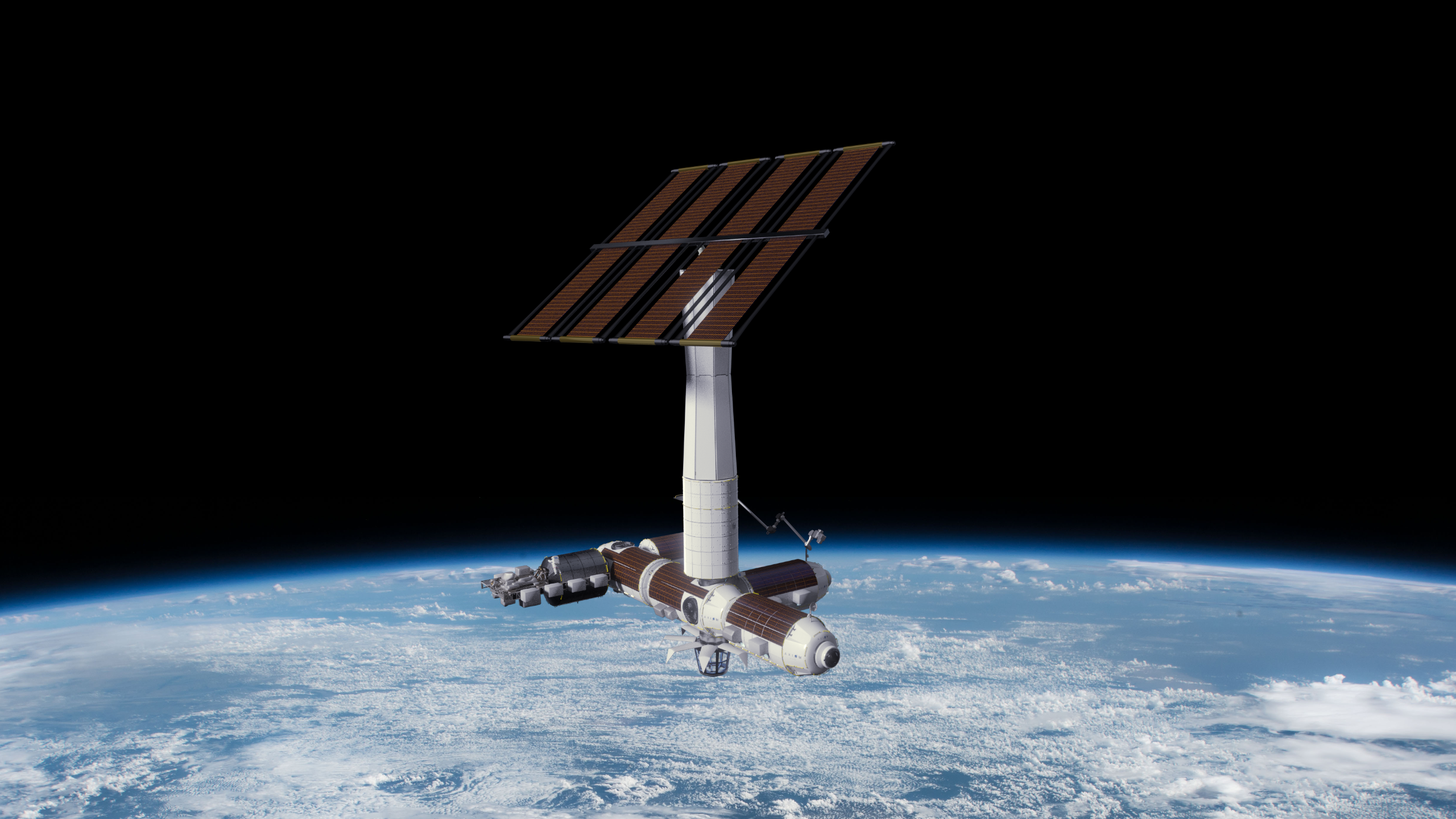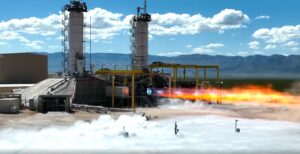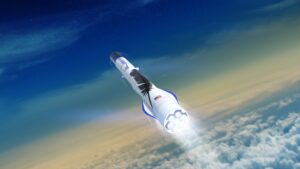
SpaceX Is About To Launch The First 4 Private Astronauts To The ISS
Right now the International Space Station continues to orbit the Earth which it has done for decades. This space station provides us with a unique opportunity to try different science, research, and manufacturing, all in space. Axiom Space has ambitious future plans to create its own commercial space station available for the future of space access and more. However, before the company can start sending its own segments into space, with the help of SpaceX, is sending four private astronauts to the ISS for the first time ever.
Only a few days from now on April 3rd, a SpaceX Falcon 9 with a Dragon Capsule on top is expected to lift off and carry these astronauts to the International Space Station. This mission is meant to be the first of its kind and not only inspire but prepare for the future of space access and more. Each astronaut onboard has specific goals and intentions during the week-long stay in the orbiting laboratory.
For the past few months, each astronaut and company involved has been prepping for this historical mission. While this mission is not sending a commercial space station into orbit, it marks a great first step towards the future of commercial space stations and general access. Here I will go more in-depth into SpaceX’s part, Axiom’s plan, and what to expect in the coming days regarding the Ax-1 Mission.
Recent Preparations

As the long awaited Ax-1 mission launch date gets closer and closer, the crew along with the multiple companies and agencies involved work on some of the final preparations prior to the launch. As of right now, if everything goes according to plan, SpaceX’s Falcon 9 will take off 6 days from now with a crew of four private astronauts headed to the International Space Station. Since early May of last year, the crew has been training for the mission. This began with zero-g and centrifuge tests in May, followed by NOLS in June later that year. Between June and December, each member of the crew went through a very thorough and detailed spacecraft training ensuring they were comfortable and capable within the spacecraft. During this same time period, all four members went through additional ISS, payload, and medical training. Now in March, after months of training, the Ax-1 Crew is heading into quarantine. Not long ago on Twitter Axiom space mentioned, “After months of training, the #Ax1 Crew is getting ready to head into quarantine for the final phase of preparation for this historic mission.” To mark this final phase of preparation, Axiom Space released new photos of the Ax-1 crew. The photos, taken in Houston, show the crew in their Axiom Space flight suits.
From left to right you first have Larry Connor the Ax-1 Pilot, then Mark Pathy, Mission Specialist, next is Michael López-Alegría, Ax-1 Commander, finally, on the right you have Eytan Stibbe, Mission Specialist. Completing hundreds of hours of training, exceeding NASA requirements, the Ax-1 crew is set to be the first all-private crew mission to the International Space Station. The four-person multinational crew is composed of Commander Michael López-Alegría of the USA/Spain, Pilot Larry Connor of the USA, Mission Specialist Eytan Stibbe of Israel, and Mission Specialist Mark Pathy of Canada. To prepare for the 10-day mission, including eight days onboard the ISS, each crew member completed training in safety, health, ISS systems, launch site operations, emergency protocols, and additional training for research and technology demonstration payloads. While on the station, the Ax-1 astronauts will complete over 25 science experiments and technology demonstrations. The Ax-1 mission is a pathfinder mission for Axiom Space’s Axiom Station, the world’s first commercial space station. However not only is Axiom Space and its astronauts preparing but also NASA, the ISS, and more. Just a few days ago on March 25th, the ISS tweeted saying, “The #Ax1 Flight Readiness Review has concluded, and teams proceed toward launch of the first private astronaut mission to the station.”
Over the past few weeks especially, a lot has been happening as the mission gets closer and closer. Prelaunch activities have been progressing, including the Ax-1 crew’s completion of a test drive Thursday, March 17, in the Dragon spacecraft they’ll fly aboard to and from the International Space Station. During the test drive, also known as the Crew Equipment Interface Test, the crew donned their spacesuits and entered Dragon Endeavour for the first time at SpaceX’s spacecraft processing facility in Florida. All of which leading towards the historic mission on April 3rd.
Ax-1 Overview

Now that we know some of the final preparations going on with the crew and different parties involved, we can take a closer look at the plan and goal of this mission. Axiom describes this mission as “the next giant leap for humanity starts here, and now.” The Ax-1 mission crew members are the first in a new class of pioneers stepping forth to lay the groundwork for Axiom Station and the full realization of low Earth orbit’s possibilities. The Ax-1 crew will conduct extensive research and STEM outreach. Their efforts align with how each philanthropist carries out his work at home, in service to all on Earth and to all who follow them beyond it. Axiom Space has ambitious future goals of manufacturing and building its own commercial space station. This is meant to be the world’s first private space station and the pillar of a thriving commercial network in Earth’s orbit. Axiom private astronaut missions are the first step on the road to this near future.
Data collected in-flight will impact understanding of human physiology on Earth and in orbit as well as establish the utility of novel technologies that could be used for future human spaceflight pursuits and humankind on Earth. “As the first step on a path to building a diverse, thriving economy in low-Earth orbit, Axiom has partnered with leaders in academia and industry to bring new users and new investigations in research to the space station,” said Christian Maender, director of In-space Manufacturing and Research for Axiom Space. “The collection of biological and technological tests during the Ax-1 mission represent a breadth of research that will inform everything from human health considerations to novel infrastructure and design for our future homes away from Earth, beginning with Axiom Station.” As I mentioned prior, a key part of this mission and the 8 days onboard the ISS is focused on different valuable pieces of research. One exciting test expected to happen involves TESSARAE. Tessellated Electromagnetic Space Structures for the Exploration of Reconfigurable, Adaptive Environments, is a multi-year research program exploring self-assembly methods for in-space construction. Named after the small tiles in ancient Roman mosaics, the modular TESSERAE tiles can join to create a larger structure. These tiles pack flat for launch; once activated, they form a robotic swarm of autonomous and self-assembling units used for on-demand construction, with future applications ranging from an extra room on a space station, to parabolic mirrors, to a home base on other worlds. The prototypes launching on the Ax-1 mission include an extensive suite of sensing and electro-permanent magnets that monitor diagnostics – provide insight into the quality of bonds between tiles – and drive conformations. This scaled demonstration will build on previous microgravity evaluations of the TESSERAE experiment to explore a new frontier for in-orbit construction of satellites and future space habitats.
The reason why so much of this research is headed to space, is due to the unique opportunities it presents. Specifically, space presents opportunities previously made unimaginable, much less accessible, by gravity. The first example could be sedimentation. The absence of sedimentation in microgravity enables researchers to combine any number of substances that would normally be extremely challenging or impossible to mix evenly on Earth. Another could be hydrostatic pressure. In a gravity field, the weight of the fluid on top pushes down on the fluid below it, resulting in hydrostatic pressure gradients. In microgravity, hydrostatic pressure is nearly eliminated, permitting secondary forces like diffusion and surface tension to dominate. One final example could be shear stress. Shear stresses form due to tangential stress created by reaction forces on fluid container walls and/or the weight of the fluid. In microgravity, shear stresses are significantly reduced due to reduced potential for surface contact with the fluid container. These are just a few unique opportunities that a commercial space station offers in low Earth orbit and that Axiom Space is interested in getting access to.
Conclusion
The opportunities in low Earth orbit alone make space a very desired location, especially by some companies. Axiom Space has been developing and manufacturing different space station segments and components. This is for an ambitious goal of creating the first commercial space station. However, before they start launching segments they are working with SpaceX and NASA to send the first four private astronauts to the ISS. With an expected launch only 6 days from now, we will have to wait and see how Axiom progresses and the impact it has on the space industry.



